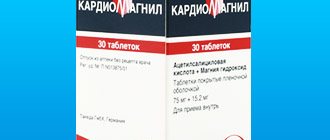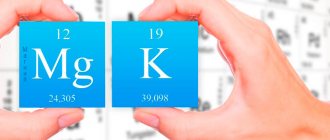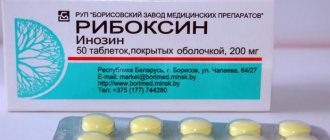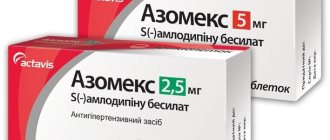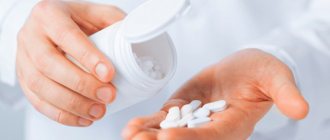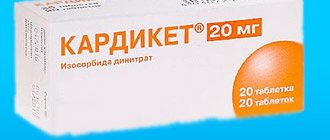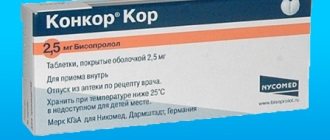The patented drug Panangin, widely known in Russia, produced in the form of dragees and injection solution, contains potassium and magnesium - substances that are extremely beneficial for the heart muscle. It is used as a means of prevention for diseases of the cardiovascular system of the body.
By regularly taking the drug, you can not only strengthen your heart, but also improve its nutrition, and also prevent the development of heart disease. The drug Panangin is recommended for use by people who have:
- heart rhythm disturbances;
- muscle weakness;
- post-infarction conditions;
- deficiency of magnesium and potassium in the body;
- chills;
- hangover syndrome;
- strong nervous excitability.
In addition, doctors prescribe the drug Panangin to the following groups of patients:
- middle-aged and elderly persons (45 years and above);
- athletes;
- sauna lovers;
- persons who constantly work physically hard;
- diet lovers;
- for diabetics.
Panangin has a positive effect on the body in general and the heart muscle in particular. It is enough to use the drug regularly, after meals, and the heart will be in normal tone.
Panangin has contraindications:
- renal failure;
- excess magnesium and potassium;
- disturbances in heart rhythm;
- individual intolerance to the components of the drug;
- Addison's syndrome.
Since the medicine has a fairly high cost, the question arises: are there analogs of the drug Panangin that are cheaper and can it be replaced?
There are similar drugs of both Russian and foreign origin on the pharmaceutical market. The differences between the drugs mainly come down to:
- release form;
- degree of purification;
- manufacturer.
Basically, Panangin analogues are represented by the following list:
- Magnerot;
- Asparkam;
- Aspangin;
- Cardiomagnyl;
- Riboxin;
- Panangin Forte.
Each cheaper analogue has an almost identical composition and effect on the body to the main product. However, it should be remembered that only a doctor can prescribe medicine.
What are the similarities between the drugs?
Panangin and Asparkam are medications used among patients suffering from heart disease. Medicines can improve cardiac activity and maintain the level of microelements in the body. Both means have both similarities and differences.
What the drugs have in common:
- Both medications include potassium and magnesium. This is what makes it possible to use both means to replenish the level of microelements in the body;
- both products are available in pharmacies without a prescription;
- analogues have a similar regimen. Typically, patients are prescribed 1 - 2 tablets three times a day;
- both drugs help prevent involuntary contraction of a person’s muscles, which occurs against the background of constant use of diuretics to lower blood pressure;
- the products have similar indications for use. These include coronary heart disease, heart failure, hypertension, potassium or magnesium deficiency in the body.
The drugs are similar in composition and action. Both remedies are necessary for the heart in case of severe pathologies. Regarding the therapeutic effect.
Important! It is impossible to single out the best medicine; both of them have approximately the same effect on the body.
Analogues of panagin and asparkam
Pamaton Asparkam-L Asparkam-UBF
Panangin and asparkam are not the only medications used by patients with a lack of potassium and magnesium in the body. Cheap generics are presented in sufficient quantities by our pharmacists.
The following similar drugs are available:
- pamaton;
- asparkam-UBF;
- asparkam-L;
- Potassium-magnesium aspartate.
These medications can be used as substitutes for panangin. You should compare them according to indications and side effects and choose the most suitable one for a particular patient.
Another drug for the treatment of heart disease is cardiomagnyl. It contains magnesium, just like panagin. But the second component in cardiomagnyl is aspirin, which helps thin the blood and prevents the formation of blood clots. That is why these drugs cannot be used as a replacement for each other. They are an addition to the treatment prescribed by cardiologists.
Video
There have been no scientific studies on which drug is considered more effective: Panangin or its analogues. In terms of their pharmacological properties, they are identical. Some doctors prefer a foreign drug, believing that European manufacturers are characterized by a more conscientious attitude to the production of medicines than Russian companies that produce a cheap analogue of Panangin. But it is impossible to give a definite answer to the question: what helps better?
Difference between drugs
What is the difference between medications? The main difference between Asparkam and Panangin is the country of manufacture of the drugs. Asparkam is a domestically produced product, Panangin is produced by a Hungarian company. The cost of drugs also differs. Panangin is more expensive, its approximate cost is 140 rubles, the price of Asparkam is from 10 rubles. Domestic medicine is produced in the form of tablets, while Hungarian medicine is produced in the form of capsules. The main advantage of Panangin is a more convenient form of administration. In addition, the capsules are covered with a special protective shell, that is, they do not harm tooth enamel.
Panangin is produced in the form of film-coated capsules
The individual preferences of the patient play an important role in the choice. Some people find it more convenient to take the products in tablet form, crushing them into powder and diluting them with water. For such patients, Asparkam is more suitable. Accordingly, patients who find it easier to swallow a capsule should give preference to Panangin.
For people suffering from gastrointestinal diseases, such as ulcers, gastritis, colitis, the drug in capsule form is recommended, since its effect on the walls of the stomach and intestines is more gentle.
Features of Panangin
The drug is produced by the Hungarian pharmaceutical company Gedeon Richter. This combination of microelements was created in the late fifties of the last century by this very company. Therefore, Panangin is an original drug that has stood the test of time.
Numerous studies have been conducted proving the effectiveness of panangin, for example, in myocardial dystrophy. At the same time, ECG indicators significantly improved. Its benefits for the heart in case of mitral valve prolapse have been proven. The studies were conducted in children. After using Panangin, there was a decrease in prolapse (bulging) of the mitral valve leaflets and the degree of regurgitation - backflow of blood.
The tablet itself is different from its counterpart.
- The tablet is coated with a protective coating. This allows you to reduce the effect of hydrochloric acid on the main active ingredients.
- The content of magnesium aspartate is 140 mg, potassium aspartate – 158 mg.
- There are auxiliary components in the core itself, such as silicon dioxide, corn and potato starch, povidone, magnesium stearate, talc.
The annotation contains an impressive list of contraindications, in addition to those indicated for asparkam:
- atrioventricular block of any degree;
- Addison's disease;
- amino acid metabolism disorders;
- cardiogenic shock;
- acute metabolic acidosis;
- myasthenia gravis;
- excess magnesium in the body;
- hemolysis;
- dehydration.
The description of side effects is also very detailed for Panangin. This is rarely found in the annotation for asparkam, if there is one. This indicates that the drug has been tested. All possible consequences of taking it are taken into account.
Possible cardiac disorders: atrioventricular block, extrasystoles. The digestive system may react to taking the drug in the form of nausea, vomiting, abdominal discomfort, and frequent loose stools.
Symptoms of dyspepsia can also be a manifestation of potassium overdose, which is also characterized by sensory disturbances. Excess magnesium makes itself felt by redness of the face, decreased blood pressure, thirst, depression of breathing and reflexes, and convulsions.
The tablets are placed in plastic bottles of 50 pieces. The price is quite affordable. You can purchase a package of panangin for 145 rubles. The drug helps, as evidenced by numerous positive reviews from doctors and patients.
Indications for use
Both drugs are indicated for the complex treatment of cardiovascular pathologies, but there are some differences in indications for use.
Indications for use of Asparkam:
- decreased levels of magnesium in the body, developing under the influence of various disorders;
- heart dysfunction;
- potassium deficiency;
- treatment of arrhythmia.
Asparkam is often prescribed to people who do not tolerate therapy with cardiotonic and antiarrhythmic drugs.
Indications for use of Panangin:
- heart rhythm disturbances caused by a lack of potassium in the blood;
- disruption of the functioning of the heart muscle due to toxic poisoning, including while taking medications;
- ventricular extrasystole;
- myocardial infarction;
- coronary insufficiency;
- decreased oxygen supply to tissues as a result of cardiac dysfunction;
- potassium deficiency during treatment with diuretics.
It is safe to say that Panangin differs from Asparkam in its wider spectrum of action.
Potassium and magnesium are essential for the normal functioning of the human body
Important! Asparkam and Panangin are recommended to be taken in combination with vitamin B, since it is thanks to them that potassium and magnesium are better absorbed.
Instructions
The instructions for use of both drugs indicate one treatment regimen. Both remedies should be taken 1 tablet once a day, it is recommended to do this during a meal or immediately after a meal. The duration of the course is 1 month. After this, you should take a break of 30 days, then repeat the course.
What is better to choose: Asparkam, Panangin or other analogues of drugs?
A healthy heart and strong, properly functioning blood vessels are important to have at any age. Persons with disorders in this area have to take care of themselves in every possible way and undergo a course of therapy. Among the medications prescribed to normalize the functioning of the heart and blood vessels, Asparkam, Panangin and Cardiomagnyl are especially prominent. What is more effective?
Asparkam: general characteristics of the drug
In fact, it is simply a tandem of potassium and magnesium ions contained in 1 tablet in equal parts - 175 mcg of each.
It belongs to the group of mineral-containing drugs and can be prescribed not only for the treatment, but also for the prevention of cardiovascular diseases. In particular, in athletes who need an increased dose of potassium and magnesium.
It affects metabolic processes and reduces the severity of arrhythmia. The drug is sold in packs of 50 tablets, the cost of the package is in the range of 50-80 rubles.
- Indications for the use of Asparkam may be hypokalemia, ischemic heart disease, arrhythmia of any etiology, heart failure, increased intracranial pressure, intoxication due to the use of cardiac glycosides.
- Contraindicated in case of elevated potassium levels in the body, as well as in renal failure. Use with caution in persons with liver dysfunction. There are no age restrictions; it can be used in the therapy of pregnant women and nursing mothers, but under the supervision of a doctor.
- Adverse reactions to the tablets were recorded only from the gastrointestinal tract: nausea, pain and heartburn in the epigastric region. Mainly characteristic of people with gastritis and cholecystitis, they should disappear when the dosage of the drug is reduced. If this does not happen, Asparkam is prescribed by injection or an alternative remedy is selected.
- The daily dosage for an adult is 3-6 tablets, divided into 3 meals. In order to reduce the effect on the mucous membrane of the digestive tract, they should be taken after meals. The course of treatment does not exceed 28 days, after which a break is taken for 2-3 months and, if necessary, the therapy is repeated.
- When intracranial pressure increases, Asparkam is combined with Diacarb. This treatment regimen is possible even for small children (from 4 months), but you must consult a doctor.
- In the form of injections or through a dropper, the drug is diluted in 0.9% sodium chloride or 0.5% glucose solution. The ratio of Asparkam and liquid for dilution is 1:10 when using a dropper and 1:2 for injections. Adults are administered up to 20 ml daily, setting the speed to 25 drops/min., the speed of intravenous jet injection is 5 ml/min. This therapy is carried out no longer than 10 days.
Doctors note that the simultaneous use of Asparkam with diuretics that retain potassium in the body is not recommended due to the likelihood of developing hyperkalemia. The drug also makes the effect of taking cardiac glycosides less pronounced.
Panangin as an analogue of Asparkam?
The reason why these drugs are often compared is the identical active substance for both - potassium and magnesium aspartate, which performs an antiarrhythmic function and is a set of two essential microelements for the heart.
1 tablet of Panangin contains 140 mcg of magnesium and 158 mcg of potassium - figures lower than those of Asparkam.
This fact makes it possible to increase the daily dose of the drug, but the general recommendation remains the same as for Asparkam, therefore a smaller amount of necessary elements is supplied to the body.
- Despite the reduced concentration of potassium and magnesium, Panangin has a more extensive list of adverse reactions: in addition to a negative response from the gastrointestinal tract, skin itching, AV blockade, manifestations of excess potassium and/or magnesium, expressed in the form of parasthesia, dehydration, nausea and vomiting, falling blood pressure, seizures.
- Indications for use of Panangin: chronic pathologies of the cardiovascular system, arrhythmia of any etiology, therapy using cardiac glycosides, potassium and/or magnesium deficiency.
- Panangin is not recommended for use by women in the first weeks of pregnancy and during lactation; it is prohibited for Addison's disease, a drop in blood pressure below 90 units, myasthenia gravis and hemolysis, dehydration, renal and liver failure.
- If you take astringents and enveloping agents, separate them from Panangin for at least 3 hours, otherwise the absorption of the latter will not be complete.
- The daily dosage of Panangin for adults is 3-6 tablets, divided into 3 times. It is possible to increase to 9 tablets. The dose is taken after meals; the duration of the course and its repetition are determined by the doctor on an individual basis.
The drug's release format is tablets and a solution that must be diluted for intravenous injection. From the point of view of chemical composition, Panangin is an analogue of Asparkam with a reduced dosage of potassium and magnesium.
However, if you look at the number of side effects, there are still differences between them. Which is better, Panangin or Asparkam, depends on your perception of the components of the medicine and their relationship with each other.
Cardiomagnyl: indications and recommendations of specialists
Comparing this medicine with the previous ones is not entirely correct, since its chemical composition coincides with the composition of Panangin or Asparkam in only one point: the presence of magnesium hydroxide among the main components.
One tablet may contain 15.2 or 30.39 mg of this substance, depending on the manufacturer’s dosage. The minimum figure is approximately equal to the amount of magnesium in Panangin.
An additional active substance of Cardiomagnyl is acetylsalicylic acid, known to most as Aspirin. Dosage – 75/150 mg respectively.
- The list of indications for Cardiomagnyl is as follows: previous myocardial infarction and vascular thrombosis, angina pectoris, vascular surgery. It can also be used in the prevention of thrombosis, thromboembolism, acute heart failure caused by diabetes, hypertension, nicotine abuse, and old age.
- Contraindications to taking Cardiomagnyl are early and late pregnancy, breastfeeding, erosion and bleeding of the gastrointestinal tract, cerebral hemorrhages, a tendency to bleed, asthma, and renal failure. It is also prohibited for children under 18 years of age.
- Side effects can occur from any internal system. The most common symptoms are bronchial spasms, Quincke's edema, nausea and heartburn, vomiting, headaches, sleep disturbances, and skin itching.
- The daily dosage depends on the purpose of therapy. Adults are not prescribed more than 1 tablet at the maximum concentration. On the first day, you can take 1 tablet at the maximum concentration, even if the therapy involves 75 mg of acetylsalicylic acid. Take with plenty of water.
The main task of the drug is not to replenish the deficiency of microelements, but to thin the blood, eliminate the inflammatory process, and relieve pain. Magnesium plays the role of a protective shell that prevents acetylsalicylic acid from destroying the mucous membrane of the digestive tract. Magnesium has no effect on its bioavailability.
Contraindications
Panangin and its analogue Asparkam are prohibited for the treatment of patients with cardiac pathologies in the following situations:
- development of urinary retention;
- excess potassium, magnesium in human blood;
- severe kidney pathologies;
- dehydration;
- increased blood acidity levels;
- muscular myasthenia.
Despite the fact that both products are sold in pharmacies without a prescription and have a natural composition, it is recommended to consult a doctor before using one or the other drug.
What does Asparkam contain?
1 tablet contains magnesium aspartate 175 mg (0.175 g), potassium aspartate 175 mg (0.175 g). Additional (auxiliary) substances: corn starch, polysorbate-80, calcium stearate, talc.
Asparkam refers to drugs that regulate metabolic processes. The mechanism of action is associated with the property of Asparaginate to transfer magnesium and potassium ions into the intracellular space and their participation in metabolic processes. Asparkam eliminates electrolyte imbalance, magnesium and potassium deficiency, reduces myocardial excitability and conductivity, has a moderate antiarrhythmic effect, improves metabolism in the myocardium and coronary circulation, and also reduces the sensitivity of the myocardium to cardiac glycosides and the manifestations of their toxicity. Mg2+ ions activate Na+, K+-ATPases, which results in a decrease in the intracellular concentration of Na+ ions and an increase in the flow of K+ ions into cells. When the concentration of Na + ions inside the cell decreases, the exchange of Na + and Ca 2+ ions in the smooth muscles of blood vessels is inhibited, which leads to their relaxation. K+ ions stimulate the synthesis of ATP, glycogen, proteins, acetylcholine. K + and Mg2 + ions support the polarization of cell membranes. Aspartate is a carrier of K + and Mg2 + ions and promotes their entry into the intracellular space. Entering cells, aspartate is also involved in metabolic processes, promotes the synthesis of amino acids, amino acids, nucleotides, nitrogen-containing lipids, and corrects disturbances in the energy metabolism of ischemic myocardium.
Most often - in 90% of cases - Asparkam is prescribed as an auxiliary therapy for chronic heart diseases. With prolonged use, it is necessary to monitor the level of potassium and magnesium in the blood, and constant monitoring of electrolyte homeostasis and ECG data is also necessary. Asparkam, as a drug containing potassium and magnesium, should be used with caution in patients with myasthenia gravis; in conditions that can lead to hyperkalemia, such as acute dehydration, widespread tissue damage, in particular severe burns. For this category of patients, it is recommended to regularly examine the concentration of electrolytes in the blood serum.
Asparkam should not be prescribed to patients with gastroduodenal ulcers or obstruction.
Comparative composition analysis
Potassium and magnesium are important for the normal functioning of all human organs and systems. The pharmacological properties of Panangin and Asparkam are ensured precisely thanks to these microelements. The table shows the composition of both medications.
Comparative composition of Asparkam and Panangin
The table shows that the number of main active components of both products is absolutely identical. The only difference is in the excipients. Additional components do not affect the effect of the drug, so we can conclude that the pharmacological effect of the drugs is the same.
What does Panangin contain?
- potassium aspartate 158 mg;
- magnesium aspartate 140 mg;
- other ingredients: colloidal anhydrous silicon, povidone, magnesium stearate, talc, corn starch, potato starch, titanium dioxide, macrogol 6000, eutragit E.
1 tablet contains 158 mg of anhydrous potassium aspartate (which corresponds to 36.2 mg of potassium), 140 mg of anhydrous magnesium aspartate (which corresponds to 11.8 mg of magnesium). Please note that Panangin tablets are film-coated.
Potassium and magnesium ions, as important intracellular cations, are involved in the work of a number of enzymes, in the process of binding macromolecules with subcellular elements and in the mechanism of muscle contraction at the molecular level. The ratio of extra- and intracellular concentrations of potassium, calcium, sodium and magnesium ions affects myocardial contractility. Aspartate as an endogenous substance is a carrier of potassium and magnesium ions; has a pronounced affinity for cells, its salts undergo dissociation only to a small extent. As a result, ions penetrate into the intracellular space in the form of complex compounds. Magnesium aspartate and potassium aspartate improve myocardial metabolism.
Reviews from doctors
What are doctors' reviews of analogue drugs?
Anton Sergeevich, cardiologist, Moscow “It is impossible to unequivocally answer the question of which is better - Panangin or Asparkam. The drugs have exactly the same composition, so their effect on the body is no different. Asparkam is a more budget option, but it is not inferior to a foreign product. Among the disadvantages of Asparkam is its tendency to cause hyperglycemia.”
Valery Stanislavovich, cardiologist, Ufa “I don’t see any fundamental difference between these two drugs, so it’s hard to choose one best medicine. Panangin is available in capsules, which I think is its advantage. In addition, the use of the product is allowed in pediatric practice. The advantages of Asparkam would be low cost and availability. Both drugs have a number of contraindications, so I don’t recommend using them on your own.”
What's better?
Which remedy is better? Most experts believe that Panangin deserves more trust, but this opinion has not been confirmed by clinical trials, that is, the best effectiveness of Panangin in practice has not been proven. Both drugs are good in their action, both products have an identical composition.
The advantages of foreign medicine include a gentle effect on the gastrointestinal tract. This was achieved thanks to a special coating of the capsules. That is why doctors prescribe Panangin to patients with ulcerative colitis, gastritis, and other diseases of the stomach and intestines.
Why do most experts prefer Panangin? It comes down to trust in the Hungarian campaign and the quality checks used in the country. But according to many patients who tried Panangin treatment, they did not see any effect.
When choosing a product, you should be guided by personal preferences and doctor’s recommendations.
